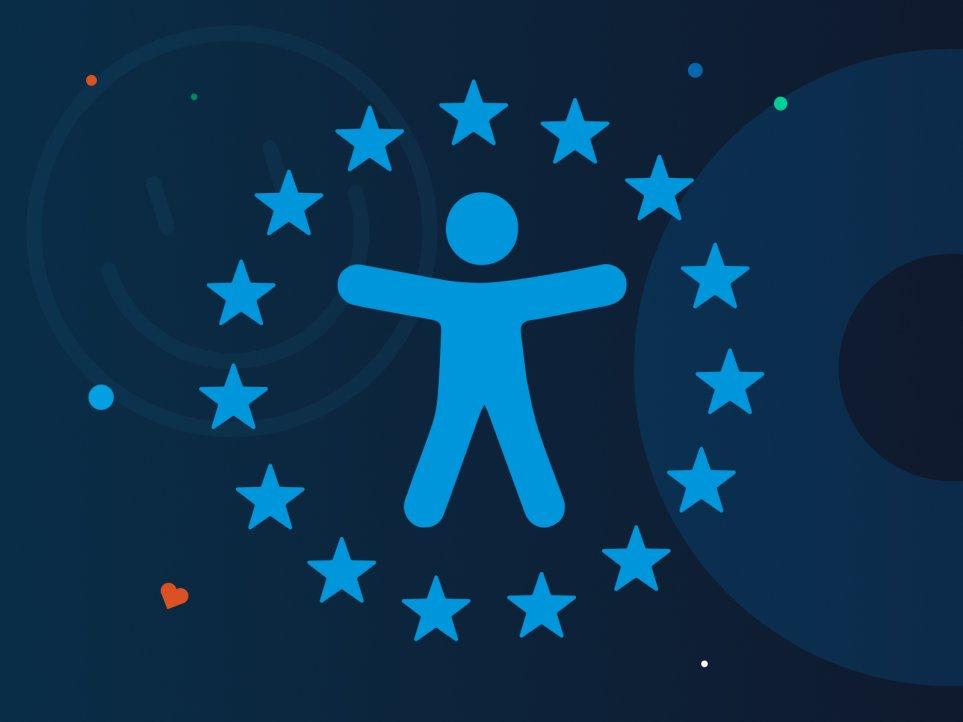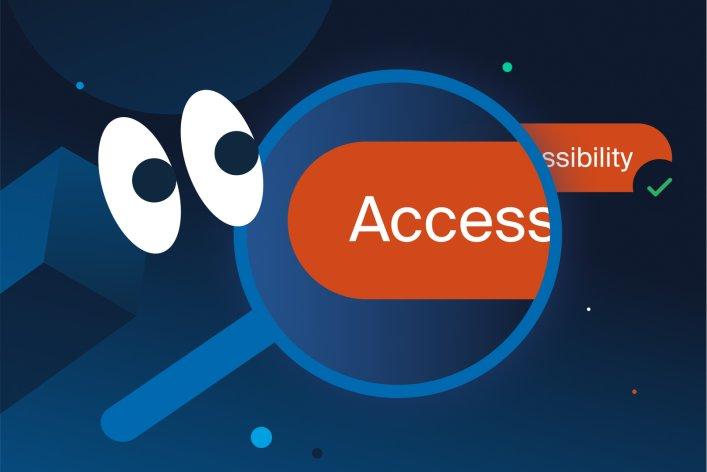August 15, 2025
Tackling the European Accessibility Act (EAA)
Author: Michael Großklaus, Frontend Lead
In 2019 the European Union had signed off the European Accessibility Act (EAA) which requires providers of certain websites and other products to guarantee accessibility of their websites and products until June 28th 2025. In this post, we want to answer some questions you might have as the operator of a website and shed some light on the matter.

What is the European Accessibility Act (EAA)?
The European Accessibility Act (EAA) is a directive of the European Union, aiming to standardise accessibility requirements for products and services. It does not only affect websites, but also “computers, smartphones, e-books, and TVs, as well as public services like television broadcast, automated teller machine (ATMs), ticketing machines, public transport services, banking services, […]”1. In Germany, the directive was implemented with “Barrierefreiheitsstärkungsgesetz” (BFSG).
We have written a blog post, in case you want read more about why this is important and why inaccessible websites affect more people than you might think: “Introduction to digital accessibility”.
Is my website affected by the European Accessibility Act directive?
Roughly speaking, if your website offers a service or if you are selling products online, you are most likely affected. However, we cannot give you legal advice — only someone authorized to provide legal advice can and should tell you whether you are affected by the European Accessibility Act.
Do I need a certificate?
It is not necessary to have a certificate proofing that you have taken care of the accessibility of your website. However, acquiring a proper certificate usually requires a decent amount of effort and detailed testing. That means receiving a certificate shows a high level of accessibility and can be seen as a strong sign of your commitment to the matter.
In Germany, the so called BITV Test is the most common and accepted way of achieving such a certificate.
What needs to be done to comply with the European Accessibility Act?
To comply with the European Accessibility Act, your website needs to fulfil the Web Content Accessibility Guidelines (WCAG) 2.1 AA. It is a complex guideline and sometimes hard to understand. However, in simple terms, it can be broken down into three main pillars:
- Technical implementation: This is almost exclusively taken care of by the developers of your website and describes if the website is technically built in an accessible way.
- Visual design & architecture: This describes if the information on a website is structured and displayed accessibly. This includes simple aspects like color contrasts, but also more complex topics like alternative ways of navigating through the content (for example a search in addition to the navigation). Usually UX and UI designers take care of this.
- Content: This is where it becomes tricky as all the content that is being added to your site needs to be accessible, e.g. using correct heading structures, using appropriate alternative texts for images etc. Most of the time this is your responsibility.
How can I make my website accessible?
As developers like to say: it depends. Unfortunately, accessibility had long been a neglected topic by many — website operators, but also agencies, developers, designers etc. Many websites are therefore in bad shape when it comes to accessibility. Fortunately, awareness has increased over the last years and things are slowly becoming better. But just as your service and situation is unique, so too can the potential problems on your website be unique. We definitely suggest to get a quick audit done to give you a first impression where your problems are. Only based on that an approach should be developed to make your website accessible.
How much does the implementation cost?
Again, this highly depends.
- Has your website been built recently (and therefore maybe already a bit more effort was put into accessibility) or is it quite old?
- Is it an application or for example an online shop that does barely have any individual custom pages or is there a CMS behind it which gives you as an editor a lot of freedom?
- Has accessibility be kept in mind by all parties involved from early on or was it (partly or completely) ignored?
- Is the site rather static or are there a lot of interactive components on the site?
So, there are lot of factors that influence the cost, not only of fixing all the issues, but also finding out which issues actually exist (which can often be more work than actually fixing those issues).
I got a report and it says there are hundreds of errors!
With the increasing awareness of the European Accessibility Act, more and more companies offered cheap advice and/or tests about accessibility compliance. Unfortunately there is often no expertise in these companies and those reports (which are usually automated) can contain a lot of nonsense.
Accessibility is a complex topic and doing it right therefore comes with a cost. If someone offers you for a very low price to tell you what you need to do, you can be certain that this is not a reputable offer.
I saw this service that can make my website accessible. Can I use that?
There are companies that offer so-called “accessibility overlays”. Those are scripts that you can include in your website and claim to automatically make your website accessible. These are highly dubious and should not be trusted. There is a lot of information out there explaining what the issue is with those overlays. But to keep it short: Machines or scripts can always only detect a small amount of issues (20-30%). And that does not even mean that they can fix those issues properly. Accessibility is a very individual topic focused on humans and needs to be taken care of by humans.
Compliance with European Accessibility Act: How Factorial can help
Accessibility has been an important topic for Factorial, long before the European Accessibility Act has become a hot topic. We tackle all our projects with accessibility in mind right from the beginning, involving all parties that need to be involved.
If you need help making sure your website is accessible, we are happy to help. This ranges from a quick audit to a very detailed one, to the complete correction of all issues and the receipt of BITV certification.


